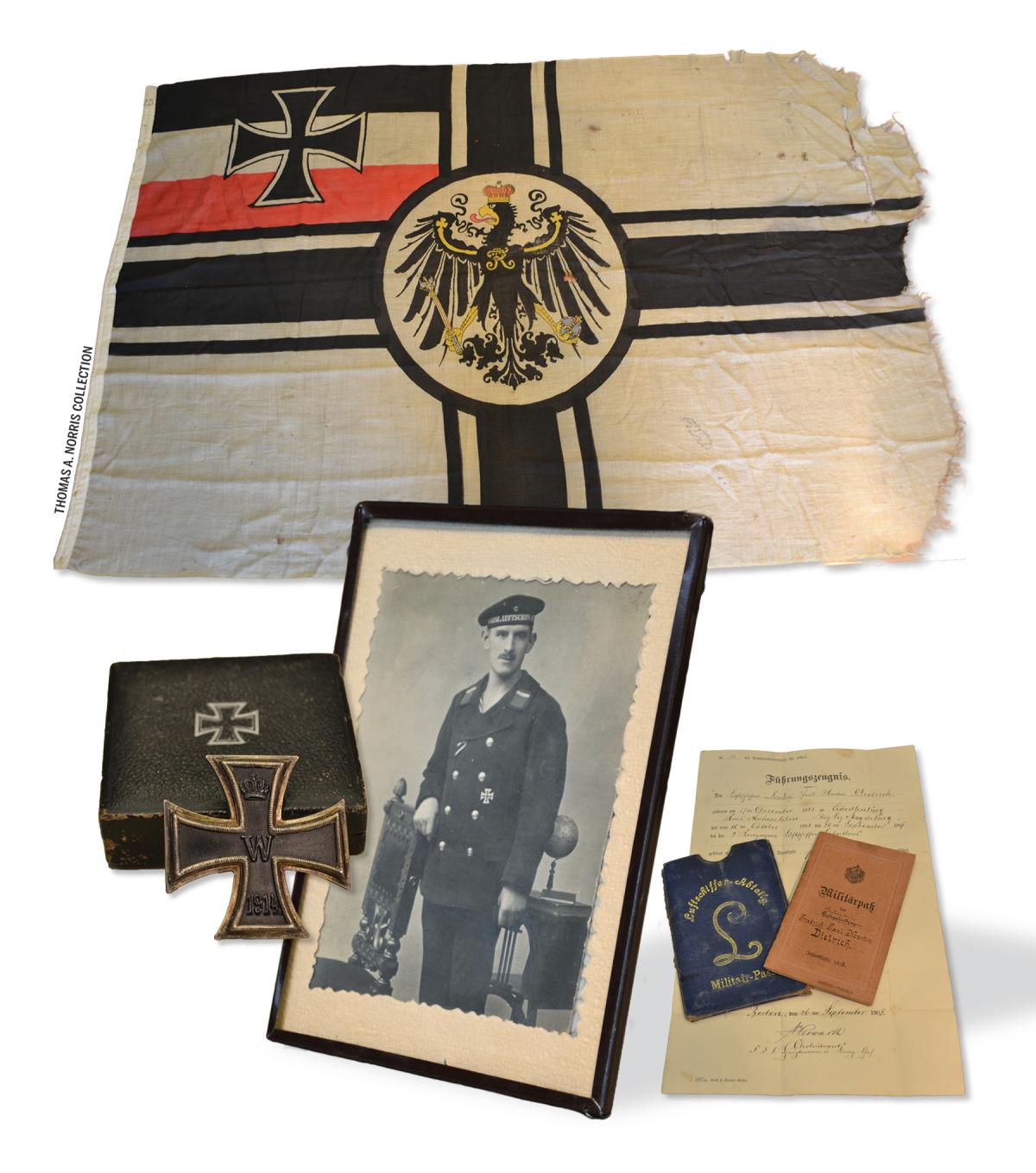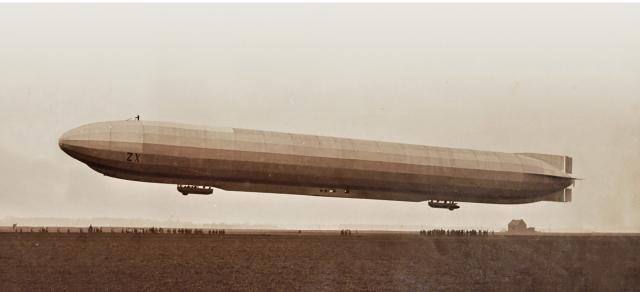In a springtime gripped by a sense of catastrophe, a collection of artifacts has come to our attention that awakens memories of another springtime long ago and another catastrophe—though on a vastly smaller human scale. It was on 6 May 1937 that the airship Hindenburg, the world’s largest dirigible, went crashing to her fiery end at Manchester Township, New Jersey. And in the funeral pyre of her wreckage one could sense it was not just the death of the mighty Hindenburg, but the age of the zeppelin as well. Airships would live on in increasingly diminished roles, but the days when these Jules Verne–esque behemoths ruled the skies clearly were passing. Like many technological periods that rise only to fade away, the zeppelin era left behind a host of memories—and relics.
The collection of such airship memorabilia is a rarefied pursuit, but indeed a fascinating one. And these random samples from the golden age of inflatable aircraft, from the collection of Thomas A. Norris, hark back to the opening decades of an earlier century that, like our own, seemed brimming with promise but fraught with perils.
The flag is the sole survivor of another airship that met her demise while in flight—the German Navy zeppelin L5, factory number LZ-28. (The photo below, of the similarly designed German army zeppelin LZ-29, shows what L5 looked like.) The mere existence of the tattered ensign is a testament to the indefatigable grit of her crew. Built at Friedrichshafen, L5 made her maiden run on 22 September 1914, less than two months after the opening salvos of World War I. She minehunted in the Baltic, carried out bombing raids, and flew 47 reconnaissance missions before her ultimate date with fate. On 6 August 1915, she was fatally crippled by Russian artillery fire. The crew managed to coast her down in a heavy forced landing. Beyond salvaging, L5 was scrapped, but the airshipmen had managed to save her flag. And somehow, across many years, passing through many hands, it has survived to this day.
The crew’s courage and determination also must have been evident in their fellow airshipman, Luftschiffer Friedrich Paul Martin Dietrich, whose photo and service papers are shown here, along with the Iron Cross he earned while in the service of the Kaiser. Dietrich’s medal is an Iron Cross First Class—distinguishable by its pin clasp (as opposed to a ribbon) and the wearing of it on the left side of the tunic, as seen in the photo. Researcher-collector Michael M. Hasco, previous owner of the items, ran into dead ends in his effort to track down the identity of the airship in which Dietrich served.
Those airships are gone. But the indomitable spirit that garners medals, and sees badly damaged ships to a safe landing when all seems lost, lives on. Fortunately, for all of us, some of it lives in each of us, and it will never die.




